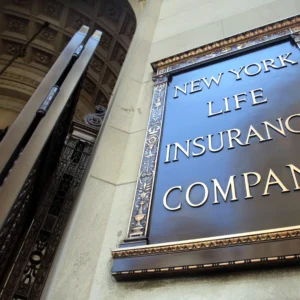Introduction
Florida homeowners—whether new arrivals or lifelong locals—are facing a major headache this year: 2025 hurricane insurance premiums are surging, and understanding what’s driving the hikes is essential to protecting both your home and your wallet. In this blog, we’ll explore why these costs are skyrocketing, compare public and private insurance options, share real homeowner insights, and offer clear, actionable tips to manage your premiums.
You’ll find:
- What’s fueling premium increases in 2025
- A breakdown of private vs. Citizens coverage
- County-level cost comparisons
- Real stories from Floridians
- Smart strategies to lower your insurance burden
- A thoughtful conclusion with next steps
Let’s get personal and proactive—from the Keys to the Panhandle.
Why Are 2025 Hurricane Insurance Premiums Rising?
1. Increasing Storm Frequency & Severity
Recent years have been brutal. In 2023 alone, there were 28 billion-dollar weather disasters nationwide—causing $93 billion in damage—making firms adjust pricing to reflect increased risks. Hurricanes Helene and Milton in 2024 added another $100 billion in costs, placing heavy strain on the insurance system (dontgethittwice.com).
A Florida Atlantic University survey highlights this sharply:
“Floridians are connecting the dots between climate change and the damaging hurricanes and soaring insurance premiums they’ve experienced in recent years” (fau.edu).
It’s no mystery why insurers are pushing premiums skyward.
2. Spiking Reinsurance & Construction Costs
Insurers don’t operate in a vacuum—they rely on reinsurance to spread risk. But reinsurance costs are climbing:
- Senate Bill 2A introduced the Florida Optional Reinsurance Assistance program to help manage costs. Yet reinsurance rates may still rise ~50% .
- And don’t forget construction inflation: tariffs on building materials could push national homeowner premiums up $106 in 2025—nearly $450 in Florida (marketwatch.com).
The result? Insurers pass these increases down to homeowners.
3. Legal & Litigation Dynamics
Florida’s legal landscape remains a major factor. Tort reform passed in 2022 helped—but didn’t immediately lower rates the way lawmakers hoped .
As of May 2025, Floridians paying $5,409 annually for $300K dwelling coverage are still paying over 130% more than the national average ($2,329) (bankrate.com). Litigation costs continue to erode any savings.
Private vs. Citizens: Which Is Better for Homeowners?
Citizens Property Insurance
- Historically a last‑resort insurer, Citizens enrolled 299,882 Tampa Bay policies and dropped that by 30% to 211,964 by May 31, 2025.
- Premiums are rising—14% in 2025 for primary residences, and a whopping 50% for second homes.
- Advantage: When private insurers offer only a renew at ≤ 20% above Citizens’ rate, homeowners can revert (axios.com).
- But Citizens is overburdened—and private carriers are training their sights on more profitable policies.
Private Insurance Companies
- Over 10 new insurers have entered the market since 2023.
- Some homeowners report premiums similar—or even lower—than Citizens offers .
- Yet competition remains inconsistent: some insurers are still leaving Florida or canceling policies (thezebra.com).
Regional Premium Breakdown: Coastal vs. Inland
Here’s how average annual homeowners insurance varies across Florida counties in 2025:
| County | Average Annual Premium (2025) |
|---|---|
| Monroe (Keys) | $7,162 |
| Miami–Dade | ~$5,095 |
| Fort Lauderdale | $8,347 |
| Orlando (inland) | $2,510 |
| Tallahassee | $1,740 |
| Baker County | $1,694 |
| Pinellas County | $2,839 |
- Coastal areas like Monroe and Fort Lauderdale carry the highest premiums due to hurricane and storm surge exposure (worthinsurance.com).
- Inland counties such as Baker and Tallahassee enjoy much lower rates.
- Tip: Move just 20–30 miles inland and you can potentially halve your insurance costs.
Real Homeowner Experiences
Cape Coral: “Phenomenal” Hikes
- After Hurricane Ian, one homeowner described premiums:
“It’s phenomenal… My home insurance rates shoot through the roof”.
- Some premiums have doubled, according to local residents, even for those who never made claims .
Fort Myers: A Mixed Picture
- Some homeowners in Fort Myers saw modest increases of <5%, thanks to mitigation efforts, per agent Doug Nellans .
- That’s a far cry from double- or triple-digit increases—proving that preparation pays.
A Broad Trend
- Roughly 20% of Florida homeowners are opting out of coverage entirely—opting instead to self-insure (axios.com).
- The “hidden cost” of not insuring? Risks from damage, displacement, liability, and lender-mandated force-placed insurance, which is often expensive and limited (investopedia.com).
Strategies to Manage — or Lower — Your Premium
You can’t control hurricanes, but you can take smart steps:
- Improve Wind Mitigation Features
- Install hurricane windows, shutters, and reinforced roofing.
- One report noted homes without these features can cost 4× more to insure (kiplinger.com).
- Get a Qualified Wind Mitigation Inspection
- Make improvements part of a formal inspection.
- You may qualify for significant discounts—just what Doug Nellans references .
- Shop Around Every Renewal
- Talk to your agent and compare offers—even annually.
- Many private insurers still match or undercut Citizens if you push them (worthinsurance.com, axios.com).
- Consider Location Carefully
- If you’re buying, look inland to save thousands per year.
- Even moving within a metro area can lower risk and cost.
- Add Flood Insurance
- Standard home policies exclude flood; FEMA flood insurance increased ~15–18% under the new Risk Rating 2.0 model (floridarealtors.org).
- For many coastal homeowners, flood insurance is a must.
- Maintain Your Property
- Keep gutters, trees, and roof in good shape to avoid claims that drive up future costs.
- Stay Informed on Legislation and Programs
- Understand programs like FORA and how changes may affect your yearly renewal (floridarealtors.org).
Table: Summary of Key Factors
| Factor | Explanation |
|---|---|
| Storm Severity & Frequency | More powerful storms = higher claim risk = higher premiums |
| Reinsurance & Building Costs | Rising material/labor costs plus tariffs increase insurer expenses |
| Legal Environment | Lawsuit dynamics and legal reform shape insurer pricing structure |
| Wind Mitigation Measures | Structural upgrades can significantly lower premiums |
| Insurance Type (Private vs. Citizens) | Citizens has limitations; private carriers may offer competitive rates |
| Geographic Risk | Coastal counties pay far more than inland ones |
| Flood vs. Wind Coverage | Flood insurance often required—and it’s separate from home policies |
What Lies Ahead for 2025 & Beyond?
- Rate Stability?
A flat 0.3% increase in Q1 2025 may hint at stabilization—but overall, the trend since 2022 is a 40% rise . - Market Shifts
Citizens continues to shed policies; private firms are stepping in—but some still withdraw . - Legislative Watch
2022’s tort reforms (SB 2A) had mixed effects—litigation is down somewhat, but premiums are still high (myfloridacfo.com). - Climate Change Factor
As storms intensify, the insurance market will continue evolving, likely keeping premiums elevated (en.wikipedia.org).
Conclusion: What You Should Do Right Now
- Get a wind mitigation inspection and make qualifying upgrades before renewal season.
- Shop multiple providers annually, and weigh Citizens against private carriers.
- Ask about flood insurance, whether you need it or not—make an informed decision.
- Maintain your home to prevent future claims.
- Follow legislative news—programs like FORA and legal reforms can actively influence rates.
Final Take
Yes, Florida’s 2025 hurricane insurance premiums are among the highest in the nation—but you aren’t powerless. A thoughtful mix of home improvements, smart shopping, and risk awareness can help tame costs and add peace of mind heading into each hurricane season. Start now, before your next renewal—it could save you thousands and give you one less worry.
Stay safe—and let’s hope hurricanes stay away.






